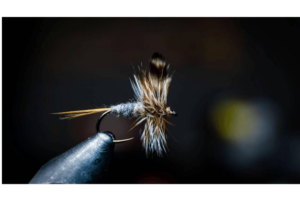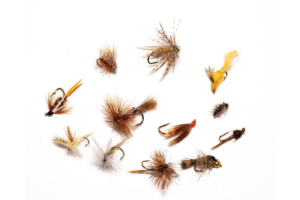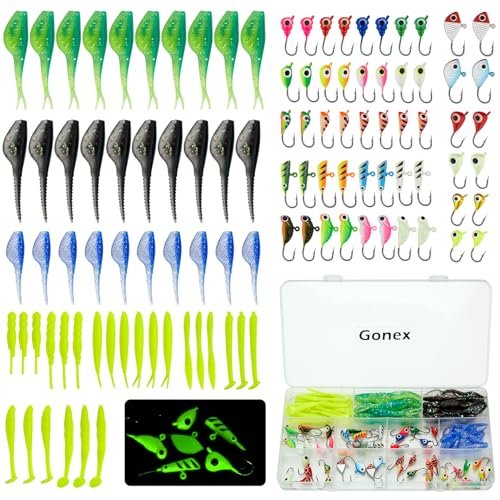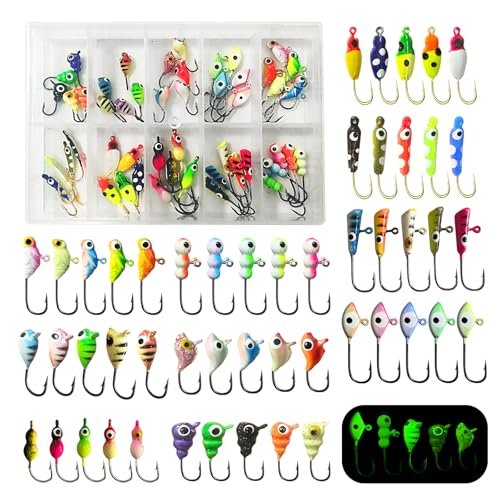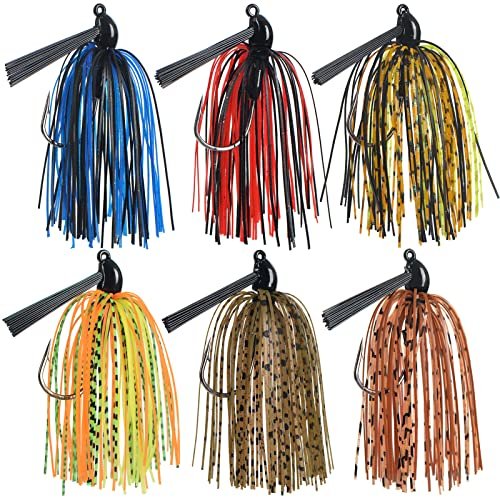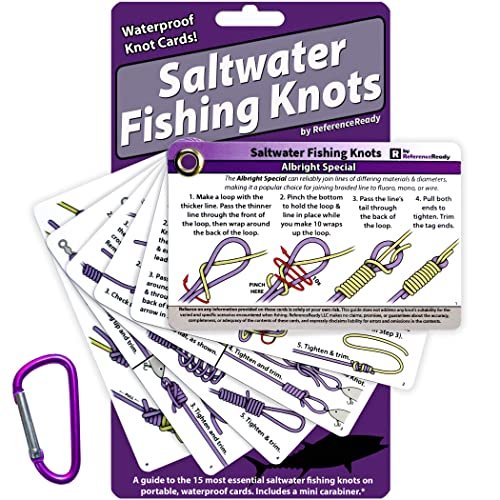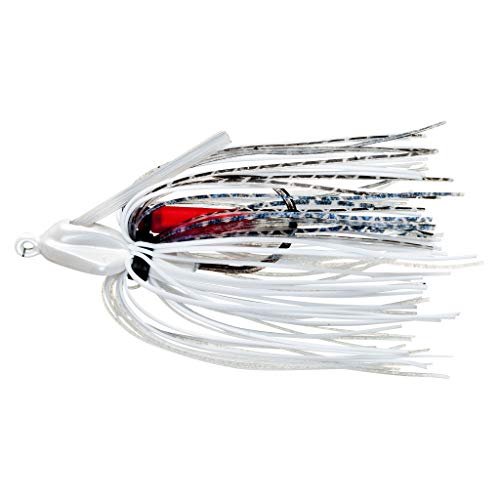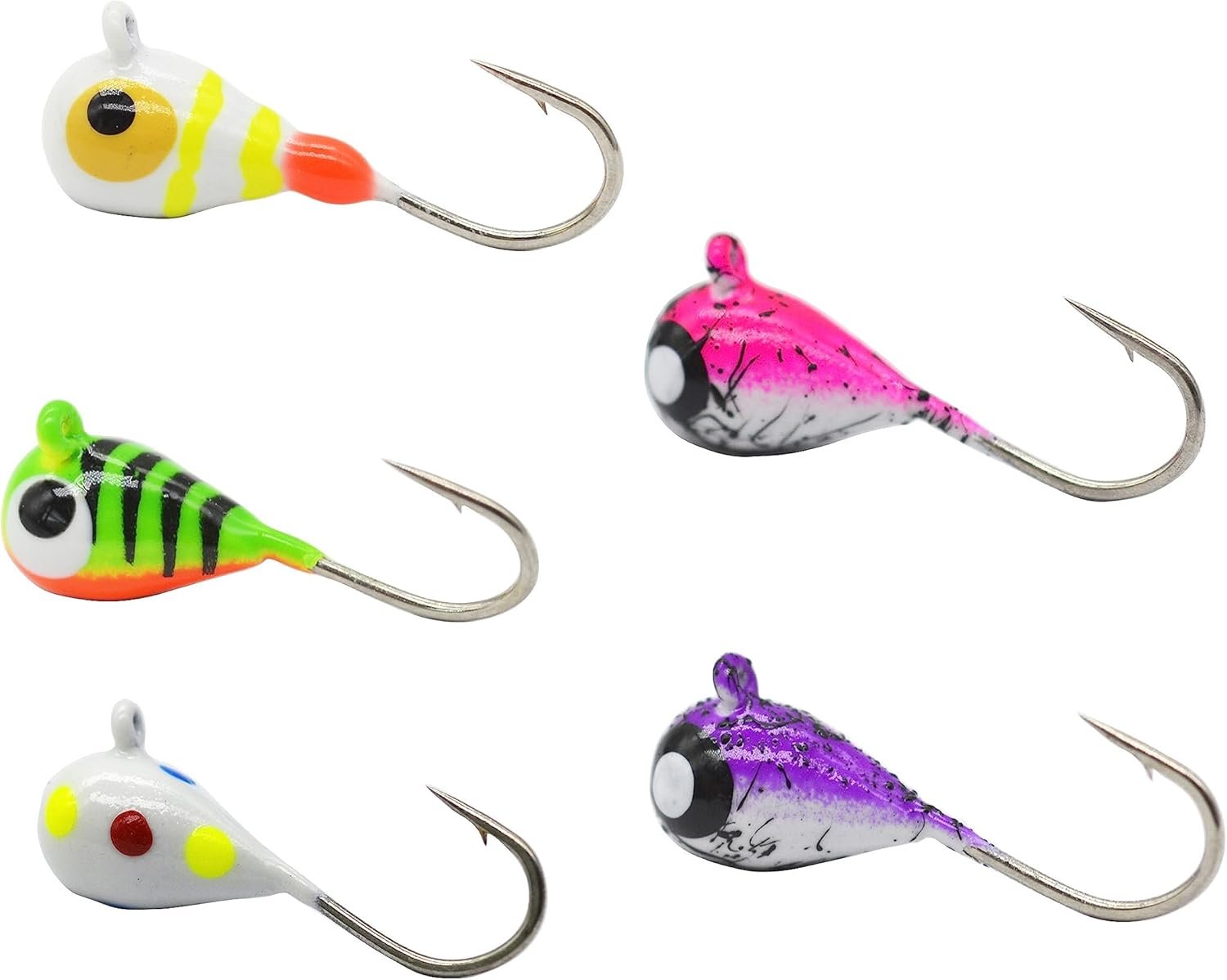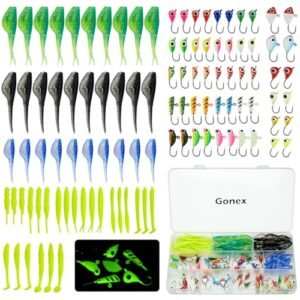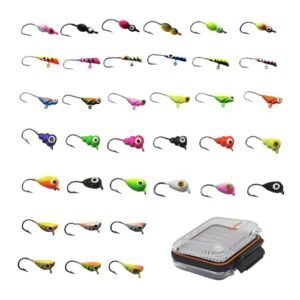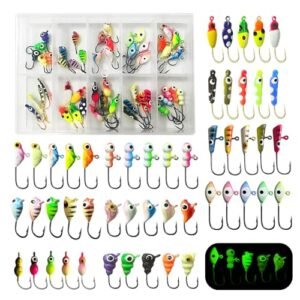Trout flies are crucial tools for anglers aiming to catch trout. These artificial flies imitate insects, larvae, and other natural prey, making them attractive to trout. They come in various patterns, sizes, and colours to match different conditions and trout preferences.
Fly fishing enthusiasts often carry a diverse selection of trout flies to adapt to changing environments and trout behaviour. Choosing the right fly can significantly impact fishing success. Beginners and experienced anglers alike benefit from understanding the types of trout flies and their uses. Proper knowledge and selection of trout flies increase the chances of a rewarding fishing experience.

The Art Of Selecting Trout Flies
Choosing the right trout fly can make a big difference in your fishing success. It is like picking the right tool for a job. You need to know what works best.
Trout flies come in many shapes, sizes, and colours. Each type has its own special use. To catch more trout, you must learn how to choose the right fly.
Matching The Hatch
Matching the hatch means using a fly that looks like the insects trout are eating. This can be bugs in the water or on the surface.
Here are some tips to help you match the hatch:
- Look at the insects around you.
- Check the water surface for floating bugs.
- Observe the trout’s feeding behaviour.
If you see a lot of one type of bug, use a fly that looks like it. This will make trout more likely to bite your fly.
The Role Of Colour And Size
Colour and size of your trout fly are important. They can affect how well you catch trout.
Here are some guidelines for choosing the right colour and size:
| Water Type | Fly Color | Fly Size |
|---|---|---|
| Clear Water | Natural Colours | Smaller Sizes |
| Muddy Water | Bright Colours | Larger Sizes |
In clear water, trout can see well. Use natural colours and smaller flies. In muddy water, they can’t see as well. Use bright colours and bigger flies.
Dry Flies: Fishing On The Surface
Dry flies offer a thrilling experience for anglers. Fishing on the surface requires precision and patience. The delicate dance of a dry fly can entice even the wariest trout. Let’s dive into the world of dry flies and explore some classic patterns and essential techniques.
Classic Dry Fly Patterns
Classic dry fly patterns have stood the test of time. They mimic the look of real insects floating on the water. Here are some popular classic patterns:
- Adams: This fly is versatile and can imitate many insects.
- Elk Hair Caddis: Known for its buoyancy and lifelike appearance.
- Royal Wulff: A bright and attractive pattern that draws attention.
- Blue Winged Olive: Effective during mayfly hatches.
- Humpy: Great for turbulent waters due to its high floatation.
Techniques For Dry Fly Fishing
Using dry flies requires specific techniques to be successful. Here are some key points to remember:
- Presentation: Ensure the fly lands gently on the water’s surface. Trout are easily spooked by a hard splash.
- Drift: Aim for a natural drift to mimic a real insect. Avoid any drag on the fly.
- Timing: Watch for rising trout and cast ahead of them. This increases the chance of a strike.
- Strike Detection: Be ready to set the hook at the slightest sign of a take. Trout can be quick and subtle.
- Equipment: Use a light rod and fine tippet for better control and presentation.
These techniques will enhance your dry fly fishing experience. Mastering them can lead to more successful and enjoyable fishing trips.
Nymphs: Subsurface Strategies
Nymph fishing is a technique where anglers fish beneath the water’s surface. This method targets trout feeding on aquatic insects. Nymphs imitate these underwater insects. Understanding nymph patterns and techniques is crucial for success.
Effective Nymph Patterns
Choosing the right nymph pattern can make a difference. Here are some effective nymph patterns:
| Nymph Pattern | Description |
|---|---|
| Pheasant Tail | Imitates mayfly nymphs. Effective year-round. |
| Hare’s Ear | Mimics various nymphs. Versatile and reliable. |
| Zebra Midge | Great for midges. Works in clear water. |
| Prince Nymph | Attractive pattern. Good for fast water. |
Nymphing Techniques For Success
Effective nymphing techniques can help you catch more trout. Here are some key nymphing techniques for success:
- Dead Drift: Let the nymph drift naturally with the current. This mimics real insects.
- Indicator Nymphing: Use a strike indicator to detect bites. This helps in deep or murky water.
- European Nymphing: Keep a tight line to feel the bites. This method is precise and effective.
- High Sticking: Hold the rod high to keep the line off the water. This reduces drag and improves presentation.
Streamers: Imitating Larger Prey
Streamers are a unique type of trout fly designed to imitate larger prey. These trout flies are perfect for attracting bigger fish. Streamers mimic baitfish, leeches, and other aquatic creatures. This makes them incredibly effective, especially in waters where trout feed on such prey. Understanding how to use streamers can greatly enhance your fly fishing experience.
Popular Streamer Patterns
Different streamer patterns cater to various fishing conditions. Here are some popular ones:
| Streamer Pattern | Description |
|---|---|
| Woolly Bugger | Versatile and effective in various water conditions. |
| Zonker | Imitates small fish and works well in clear water. |
| Clouser Minnow | Designed for saltwater but effective in freshwater too. |
Streamers Fishing Tactics
Using streamers requires specific tactics. Here are some effective ones:
- Retrieve Speed: Vary your retrieve speed to mimic the behaviour of live prey.
- Depth Control: Use weighted streamers or sink-tip lines to reach the desired depth.
- Target Structure: Cast near rocks, logs, and other structures where trout may hide.
- Strip Set: Use a strip set to hook the fish rather than lifting the rod.
Practice these tactics to improve your chances of landing a big trout.
Wet Flies: An Old School Approach
Wet flies have been around for centuries. They offer a timeless method for catching trout. Many anglers still prefer this traditional approach. Wet flies mimic insects underwater, making them irresistible to trout.
Traditional Wet Fly Patterns
Traditional wet fly patterns have stood the test of time. These patterns include the March Brown, Partridge and Orange, and Leadwing Coachman. They are known for their simplicity and effectiveness.
| Pattern | Description | Best Conditions |
|---|---|---|
| March Brown | Brown body with soft hackles | Spring and early summer |
| Partridge and Orange | Orange body with partridge hackle | Overcast days |
| Leadwing Coachman | Dark body with white wings | Low light conditions |
These patterns are easy to tie. They use simple materials. You can find the materials at any fly shop. Even beginners can master these traditional wet flies.
Swinging Wet Flies Techniques
Swinging wet flies is a classic technique. It involves casting downstream. Then, let the fly swing across the current. This method covers a lot of water quickly.
- Cast downstream at a 45-degree angle.
- Mend your line to control the speed.
- Let the fly swing naturally with the current.
The key is to keep your fly moving. Trout often strike at the end of the swing. Be ready to set the hook. This technique is effective in rivers and streams.
Using wet flies can be very rewarding. It connects you to the history of fly fishing. Plus, it catches fish. Try these old-school methods on your next fishing trip.
Emergers: Capturing The Transition
Emergers are a fascinating part of fly fishing. These trout flies represent insects in transition from nymph to adult. This stage is crucial because trout love to feast on emerging insects. Understanding emergers can greatly increase your success on the water.
Top Emerger Patterns
There are many effective emerger patterns to choose from. Here are some top picks:
| Pattern Name | Description |
|---|---|
| RS2 | A versatile pattern that imitates various emerging insects. |
| CDC Emerger | This pattern uses CDC feathers for a realistic look and floatability. |
| Comparadun | Great for imitating mayflies with its unique wing structure. |
Fishing Emergers Effectively
Fishing emergers requires a different approach. Follow these tips for better results:
- Use a floating line to keep the fly near the surface.
- Cast upstream and let the fly drift naturally.
- Watch for rises and adjust your position accordingly.
It’s also important to match the hatch. This means selecting a fly that closely resembles the emerging insects in the water. Observing the water surface can give clues about the insects present. Once you identify the hatch, choose an appropriate emerger pattern.
Another effective technique is the dead drift. This involves letting the fly drift naturally with the current. The goal is to mimic the natural movement of an emerging insect. To achieve this, avoid adding unnecessary movement with your rod or line.
Lastly, consider using a dropper rig. This setup involves attaching an emerger fly below a dry fly. The dry fly acts as a strike indicator, making it easier to detect bites. This method increases your chances of catching trout by covering both the surface and subsurface levels.
By understanding and utilizing these tips, you can effectively fish emergers and improve your chances of landing more trout.
Terrestrials: Exploiting Land-based Insects
Trout love to feast on land-based insects known as terrestrials. These insects are a significant part of their diet during warmer months. As a fly angler, exploiting these land-based insects can boost your success rate. Understanding the types of terrestrials and the best conditions for using them is essential.
Key Terrestrial Patterns
There are several key terrestrial fly patterns that mimic common land-based insects:
- Hoppers: Grasshoppers are a favourite among trout. They often fall into the water, making them easy prey.
- Ants: Both winged and wingless ants are effective. They are small but irresistible to trout.
- Beetles: Beetle patterns, especially black ones, are highly effective. They create a noticeable disturbance on the water’s surface.
- Crickets: Crickets are also a great option. Their erratic movements attract trout.
Best Conditions For Terrestrial Flies
The best conditions for using terrestrial flies are during late spring to early autumn:
| Condition | Description |
|---|---|
| Warm Weather | Terrestrials are more active and likely to fall into the water. |
| Windy Days | Wind can blow insects from the land into the water. |
| Near Vegetation | Areas with overhanging trees or grass are prime spots. |
Using terrestrial flies can be highly effective during these conditions. Keep a variety of terrestrial patterns in your fly box. This ensures you are ready for any situation.
Attractors: When Precision Fails
Fishing requires patience and precision. Sometimes, even the most accurate cast can’t lure a trout. That’s where attractors come into play. These trout flies don’t mimic any specific insect. Instead, they attract fish through their bright colours and unique patterns.
Attractor Fly Patterns
Attractor flies come in various patterns. Some popular ones include:
- Royal Wulff: Known for its bright red and peacock herl body.
- Humpy: Recognizable by its bushy appearance and vibrant colours.
- Stimulator: Mimics large stoneflies with its orange and yellow hues.
These patterns don’t imitate real insects. They stand out in the water, making them irresistible to trout.
Using Attractors In Varied Waters
Attractors work well in different water conditions. Here are some tips:
| Water Type | Best Attractor Flies |
|---|---|
| Clear Streams | Royal Wulff, Humpy |
| Muddy Waters | Stimulator, Irresistible |
| Fast Currents | Elk Hair Caddis, Trude |
In clear streams, choose trout flies with bright colours. In muddy waters, use larger and more visible flies. For fast currents, select flies that stay afloat well.
Experiment with different patterns. Find what works best for your fishing spot.
Seasonal Fly Selection
Choosing the right trout flies can make or break your fishing experience. Each season has its unique insect hatches, which attract trout. Understanding what flies to use in different seasons can significantly improve your success rate. Let’s dive into the best fly selections for each season.
Spring Favourites
Spring is a magical time for trout fishing. As the water warms, trout become more active. During this season, mayflies, caddisflies, and stoneflies are abundant.
- Blue Winged Olive (BWO): A must-have for any spring fly box. It mimics mayflies, which hatch in large numbers during spring.
- Elk Hair Caddis: Perfect for imitating adult caddisflies. This fly is versatile and can be used in various conditions.
- March Brown Nymph: Represents stonefly nymphs. These are highly effective in early spring when stoneflies are most active.
Summer Selections
Summer brings warm water temperatures and abundant food sources for trout. This is the time for terrestrials and aquatic insects.
- Hopper Patterns: Grasshoppers are common in summer. Hopper patterns are great for enticing big trout.
- Ant Patterns: Ants often fall into the water and become an easy meal for trout.
- Parachute Adams: A versatile dry fly that can imitate many summer insects. It is effective in both calm and fast waters.
Autumn Choices
Autumn is a transitional season. As temperatures drop, trout begin to prepare for winter. During this time, baitfish and large nymphs are very effective.
- Woolly Bugger: Imitates baitfish and leeches. This fly is excellent for enticing aggressive strikes from trout.
- Egg Patterns: Trout often feed on eggs from spawning fish in autumn. Egg patterns can be highly productive.
- October Caddis: Represents the large caddisflies that hatch in fall. This fly is a go-to for many anglers.
Winter Strategies
Winter fishing can be challenging. Trout become sluggish and selective due to cold water. Small nymphs and midges are crucial during this season.
- Zebra Midge: A small midge pattern that works wonders in cold water. It is effective in both rivers and still waters.
- San Juan Worm: Represents aquatic worms. This fly can be particularly effective in murky winter waters.
- Brassie: A small nymph that imitates various larvae. Its shiny body attracts trout even in low-light conditions.
Customizing Flies For Local Waters
Customizing flies for local waters can significantly boost your fishing success. Understanding the unique characteristics of your local ecosystem and adjusting your fly patterns accordingly can make a big difference.
Researching Local Ecosystems
Before you start customizing flies, it’s important to research your local ecosystems. Knowing the types of insects and other food sources available to trout in your area is crucial.
Here are a few steps to help you gather this information:
- Observe the water: Spend time watching the water. Look for insects flying above the surface or crawling on rocks.
- Talk to local anglers: Experienced anglers can provide valuable insights. They often know which flies work best in specific locations.
- Use online resources: Many websites and forums offer detailed information about local insect hatches and fly patterns.
Tweaking Patterns For Regional Success
Once you have gathered information about your local ecosystem, it’s time to tweak your fly patterns. Small adjustments can make your trout flies more effective.
Consider these tips:
- Match the colour: Use colours that resemble local insects. This makes your fly more attractive to trout.
- Adjust the size: Ensure your flies are the right size. Trout are more likely to bite if the fly looks like their natural prey.
- Modify the shape: Some regions have unique insect shapes. Mimic these shapes to increase your chances of success.
| Region | Common Insects | Recommended Fly Patterns |
|---|---|---|
| Northwest | Mayflies, Caddisflies | Adams, Elk Hair Caddis |
| Midwest | Stoneflies, Midges | Stonefly Nymph, Griffith’s Gnat |
| Northeast | Green Drakes, Blue-Winged Olives | Green Drake, BWO Emerger |
By customizing flies for local waters, you can significantly improve your catch rates. Happy fishing!
Gear And Tackle Considerations
Choosing the right gear for trout fly fishing is crucial. The right tools make your experience better and more successful. This guide covers the essentials: fly rods, reels, lines, and leaders.
Fly Rods And Reels
Fly rods and reels are the backbone of your fishing setup. The rod you choose affects your casting and accuracy. Most trout anglers prefer rods between 8.5 to 9 feet long. These rods offer a good balance of power and flexibility.
Reels should match the rod’s weight. A well-balanced rod and reel make casting easier and more enjoyable. Look for reels with a smooth drag system. This helps when fighting larger fish.
Fly Lines And Leaders
Fly lines come in various types. The most common type for trout fishing is the weight-forward floating line. This line helps you cast further and with more accuracy. Choose a line that matches your rod’s weight.
Leaders are crucial for presenting your fly naturally. A tapered leader works best. It helps the fly land softly on the water. The length of the leader varies, but 9 feet is a good starting point.
| Gear | Recommended Specs |
|---|---|
| Fly Rod | 8.5 to 9 feet, medium action |
| Fly Reel | Match rod weight, smooth drag |
| Fly Line | Weight-forward floating |
| Leader | Tapered, 9 feet |
- Fly rods affect casting and accuracy.
- Reels should match rod weight.
- Fly lines should be weight-forward floating.
- Leaders should be tapered.
- Choose a rod between 8.5 to 9 feet.
- Get a reel that matches the rod’s weight.
- Select a weight-forward floating line.
- Use a 9-foot tapered leader.
Conservation And Ethical Angling
Conservation and ethical angling are crucial for maintaining the delicate balance of aquatic ecosystems. Trout flies play a significant role in this balance. Anglers must practice responsible fishing to ensure the survival of trout populations.
Catch And Release Practices
Catch and release practices help preserve trout populations for future generations. Using barbless hooks can reduce injury to the fish. Wet your hands before handling the trout to protect their slime coat.
Revive the trout before releasing it. Hold the fish in the water until it swims away on its own. Avoid keeping the fish out of the water for too long. This practice helps maintain healthy trout populations.
Supporting Trout Habitats
Supporting trout habitats is vital for their survival. Plant trees and vegetation near streams to provide shade and reduce water temperature. Avoid polluting the water with chemicals or waste.
Participate in habitat restoration projects to improve trout environments. These projects can include removing barriers to fish migration or restoring natural stream flows.
| Conservation Tip | Benefit |
|---|---|
| Use barbless hooks | Reduces injury to fish |
| Wet hands before handling | Protects fish slime coat |
| Revive fish before release | Ensures fish survival |
| Plant vegetation near streams | Provides shade and cools water |
| Avoid pollutants | Keeps water clean |
- Use ethical fishing techniques
- Support conservation efforts
- Educate others about sustainable fishing
Frequently Asked Questions
What Is The Best Fly For Trout?
The best fly for trout often includes the Woolly Bugger, Elk Hair Caddis, and Pheasant Tail Nymph. These flies mimic natural prey and attract trout effectively.
What Flies Do Stocked Trout Eat?
Stocked trout eat nymphs, dry flies, streamers, and wet flies. Popular choices include Woolly Buggers, Pheasant Tail Nymphs, and Elk Hair Caddis.
What Size Flies For Rainbow Trout?
Use fly sizes 12 to 16 for rainbow trout. Smaller sizes, like 18 to 22, work in clear water.
How Do You Pick Trout Flies?
Choose trout flies based on the hatch, water conditions, and trout behaviour. Match fly size, colour, and type. Experiment and adjust.
Conclusion
Mastering the art of trout flies can elevate your fishing experience. Choose the right fly and practice your technique. Remember, patience and persistence are key. Experiment with different patterns and colours to find what works best. Happy fishing and tight lines!

